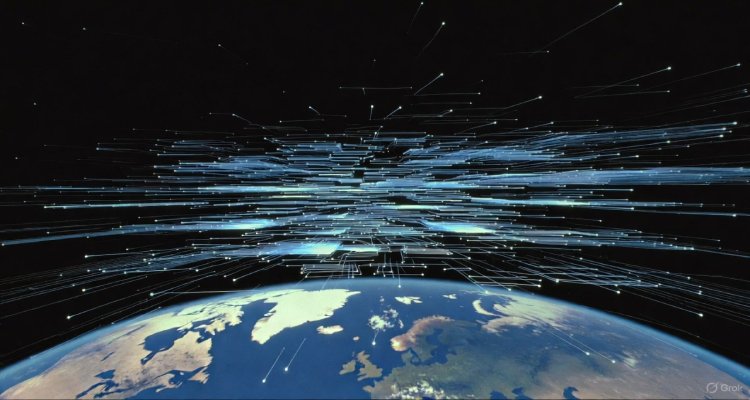The Future Nobody Wanted: When Tech Refuses to Go Away
As obsolete technologies refuse to die, society grapples with digital clutter, data decay, and the haunting persistence of systems we can’t escape — or turn off.
Introduction: The Ghosts in Our Machines
It was supposed to make life easier — faster, smarter, seamless. But decades later, humanity is finding itself trapped in a digital ecosystem that refuses to die. Outdated technologies, abandoned systems, and forgotten apps continue to hum quietly in the background, shaping how we live, work, and even think. From obsolete software still running hospitals to social platforms that never really delete your data, the future we built for convenience has turned into one we can’t shut down.
This is the future nobody wanted — one where technology doesn’t fade away; it lingers, decays, and yet somehow continues to run.
Context & Background: The Era of “Forever Tech”
In the early 2000s, innovation was about speed and novelty. Every few years, a new version replaced the old. But as the world grew increasingly dependent on digital infrastructure, a quiet problem emerged — obsolescence without deletion.
Legacy systems still manage airline schedules. Government databases run on decades-old code. Even floppy disks — relics of the 1980s — reportedly help control parts of nuclear systems in some countries.
And while individuals upgrade their devices, the digital backbone of modern society remains frighteningly ancient.
In short, technology doesn’t die anymore — it just ages in place.
Main Developments: When Innovation Outpaces Cleanup
Every new app, gadget, or AI tool promises progress. But few consider what happens to the old ones.
Take, for instance, the rise of data permanence. Emails you sent in 2005 may still exist on a forgotten server. Social media accounts of people long deceased continue to post — sometimes through automated algorithms that don’t realize their users are gone.
Meanwhile, obsolete hardware still powers critical industries. Hospitals rely on MRI machines that run on outdated Windows systems because upgrading would mean millions in costs and months of downtime.
And then there’s the environmental aftermath: over 50 million tons of e-waste are generated every year, according to the UN, much of it containing hazardous materials that leach into soil and water.
This is not just digital clutter — it’s technological inertia, and it’s accelerating.
Expert Insight: “The Past Is Still Plugged In”
Dr. Maria Thompson, a cyber-anthropologist at MIT, calls this phenomenon “the archaeology of the present.”
“We’ve entered an era where technology doesn’t vanish — it fossilizes. The code, the data, the devices — they persist, even when society moves on. And that persistence has real consequences.”
Cybersecurity analysts echo that sentiment.
Old software means vulnerabilities that never got patched. Hackers often exploit outdated infrastructure precisely because it’s been forgotten. “The more we ignore these digital ghosts,” says Rajesh Patel, a cybersecurity expert with Symantec, “the more power they gain.”
Even consumers feel it. Old apps still tracking data. Smart home devices listening long after you’ve uninstalled their apps. In many ways, we’ve lost control of the technology we thought we owned.
Public Reaction: A Growing Digital Fatigue
People are beginning to sense it — the exhaustion of living in a world that never logs off.
From the endless cycle of software updates to the quiet hum of always-on devices, digital fatigue has become a defining mood of the 2020s. Movements like the “right to disconnect” in Europe and “digital minimalism” in the U.S. are attempts to reclaim some space from the machines.
Yet, opting out is no longer simple. Even deleting an account doesn’t guarantee erasure. Data brokers, backups, and algorithmic copies ensure a shadow version of you always lingers.
We’ve built systems that remember everything — but forgot how to forget.
Impact & Implications: A World of Unwanted Permanence
This technological permanence has deep implications.
- For Privacy: Every digital action leaves a trace. The inability to fully delete data means true privacy is nearly impossible.
- For Security: Unmaintained systems become ticking time bombs for cyberattacks.
- For the Environment: Mountains of electronic waste, much of it non-biodegradable, accumulate faster than recycling systems can handle.
- For Culture: Humanity’s collective memory — stored in servers, photos, and code — becomes a permanent record, whether we want it or not.
The future, it seems, is not a clean break from the past — it’s an accumulation of every digital decision we’ve ever made.
Conclusion: Learning to Let Go
In the rush to innovate, society forgot to build an “off switch.”
Technology was meant to evolve — not haunt. But unless governments, corporations, and users learn how to retire tech responsibly, the digital world will continue to pile up like cosmic debris.
Perhaps the next great innovation won’t be something new at all — but a way to let go.
Disclaimer: This article is for informational and analytical purposes only. It reflects general perspectives on technology and society, not specific endorsements or factual claims about any company or system.











